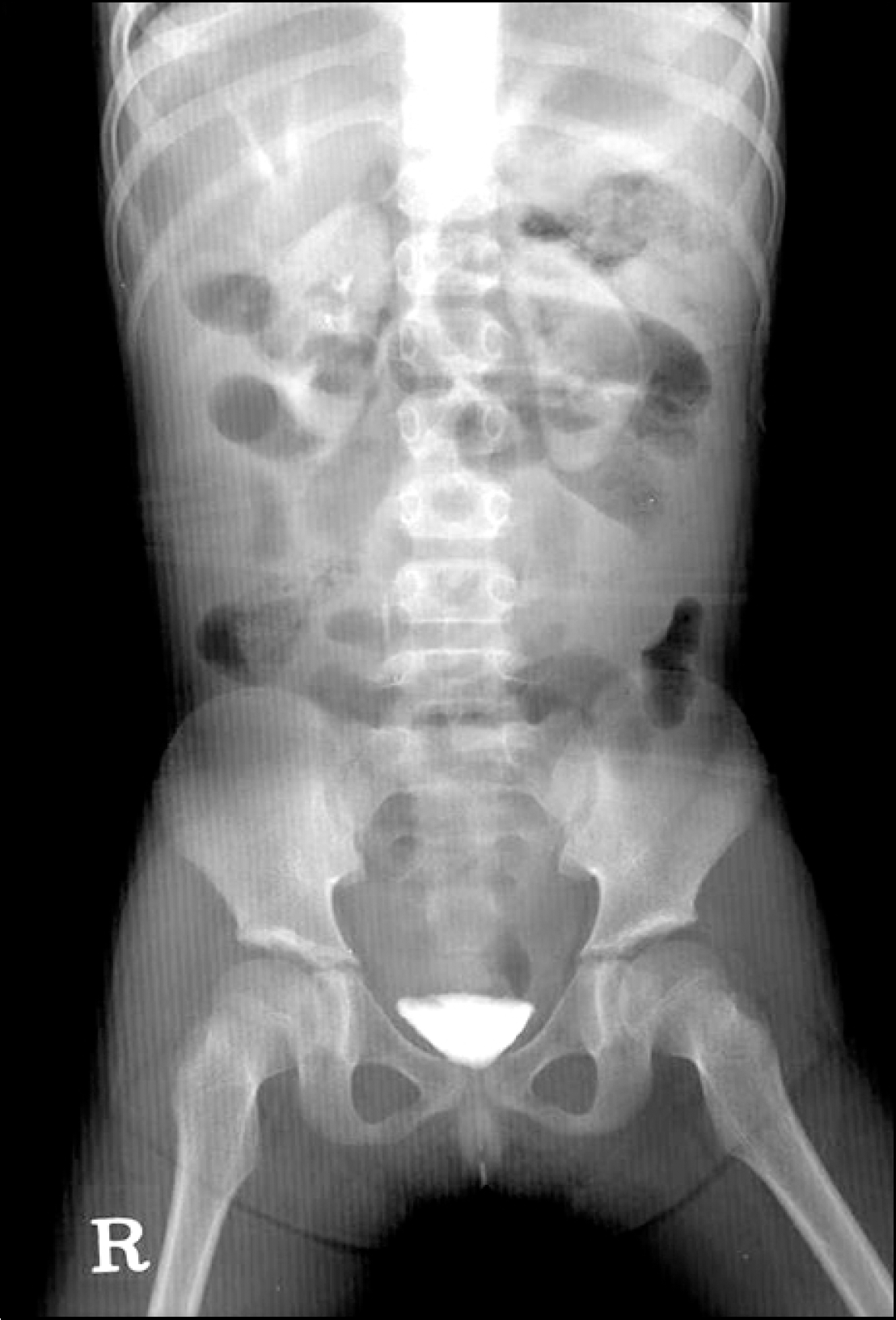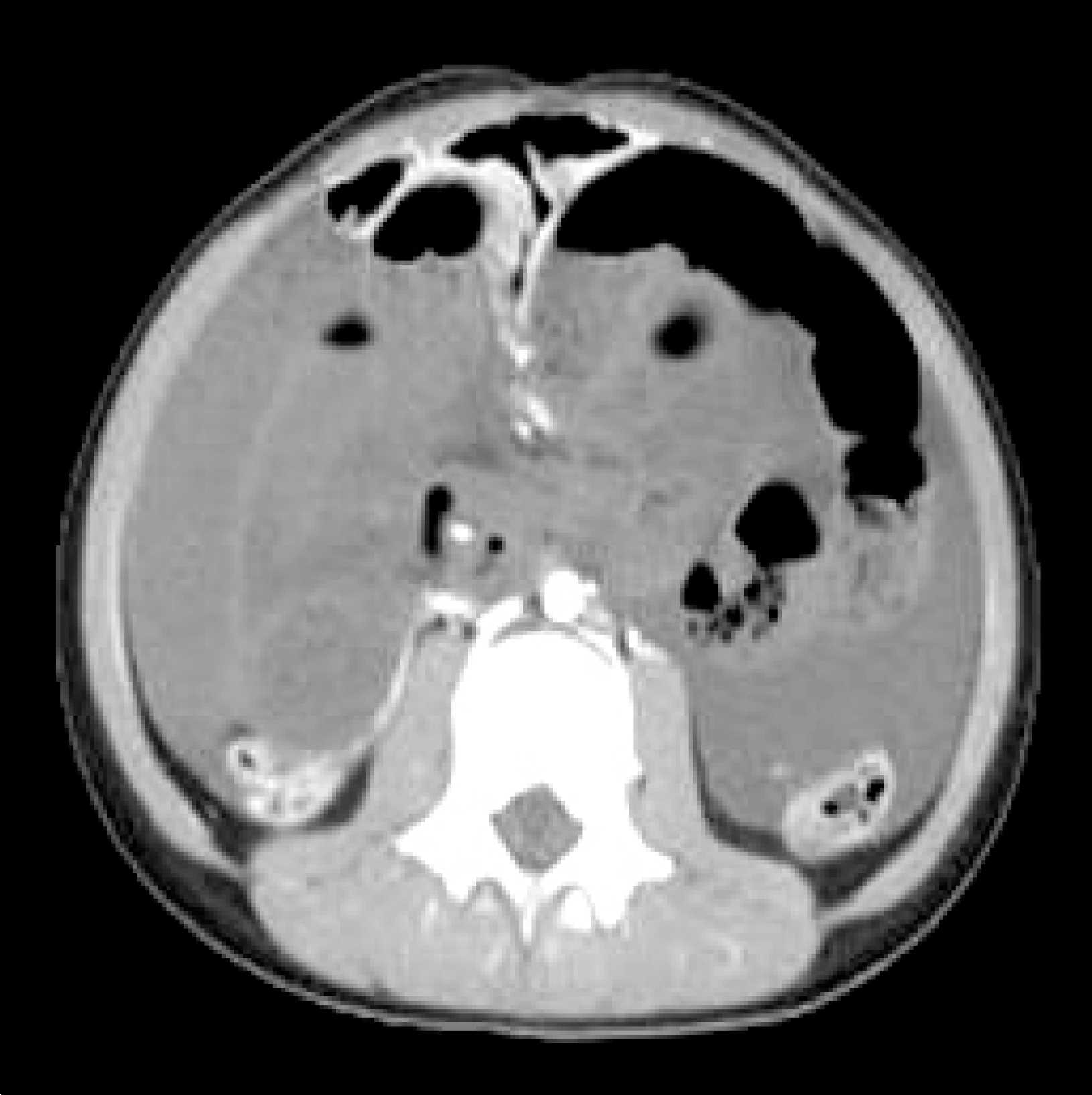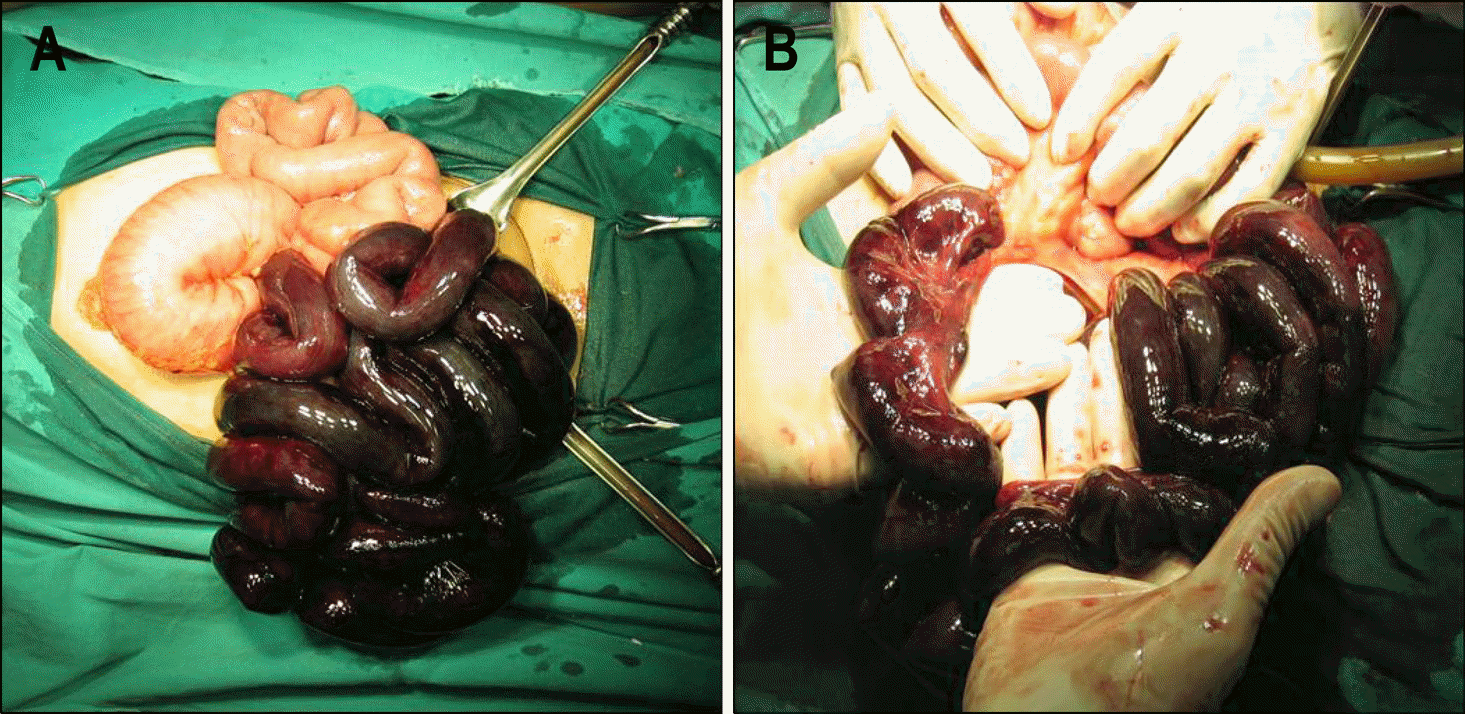Abstract
Intestinal obstruction is a common surgical emergency. Transmesenteric hernia is an unusual cause of bowel obstruction that may result in irreversible damage of the bowel and a fatal outcome. Once incarceration of the bowel occurs, strangulation and gangrene follow immediately. The mortality rate associated with this condition is about 15%, but in the presence of gangrene of the bowel, the mortality rate is more than 50%. An accurate preoperative diagnosis of a transmesenteric hernia is very difficult and rarely made. Therefore, in patients with small bowel obstruction, in the absence of a history of previous surgery to suggest adhesions or an external hernia, the possibility of a transmesenteric hernia must be considered. We describe a case with gangrene of a long segment of the small bowel caused by a transmesenteric hernia through a large defect of small bowel mesentery in a child.
REFERENCES
1. Janin Y, Stone AM, Wise L. Mesenteric hernia. Surg Gynecol Obstet. 1980; 150:747–754.
2. Armstrong O, Hamel A, Grignon B, et al. Internal hernias: anatomical basis and clinical relevance. Surg Radiol Anat. 2007; 29:333–337.

4. Cutler GD, Scott HW. Transmesenteric hernia. Surg Gynecol Obstet. 1944; 79:505–515.
5. Ming YC, Chao HC, Luo CC. Congenital mesenteric hernia causing intestinal obstruction in children. Eur J Pediatr. 2007; 166:1045–1047.

6. Kim SG, Moon HG, Jeong CY, et al. Spontaneous transmesenteric hernia in adult. J Korean Surg Soc. 2006; 71:231–233.
8. Blachar A, Federle MP. Internal hernia: an increasingly common cause of small bowel obstruction. Semin Ultrasound CT MR. 2002; 23:174–183.

9. Pomeranz AA, Steppacher LG. Transmesenteric hernia; report of a case with herniation through the sigmoid mesentery. J Mt Sinai Hosp N Y. 1952; 19:465–472.
10. Vaos G, Skondras C. Treves' field congenital hernias in children: an unsespected rare cause of acute small bowel obstruction. Pediatr Surg Int. 2007; 23:337–342.
11. Ghiassi S, Nguyen SQ, Divino CM, Byrn JC, Schlager A. Internal hernias: clinical findings, management, and outcomes in 49 nonbariatric cases. J Gastrointest Surg. 2007; 11:291–295.

12. Fujita A, Takaya J, Takada K, et al. Transmesenteric hernia: report of two patients with diagnostic emphasis on plain abdominal X-ray findings. Eur J Pediatr. 2003; 162:147–149.





 PDF
PDF ePub
ePub Citation
Citation Print
Print





 XML Download
XML Download